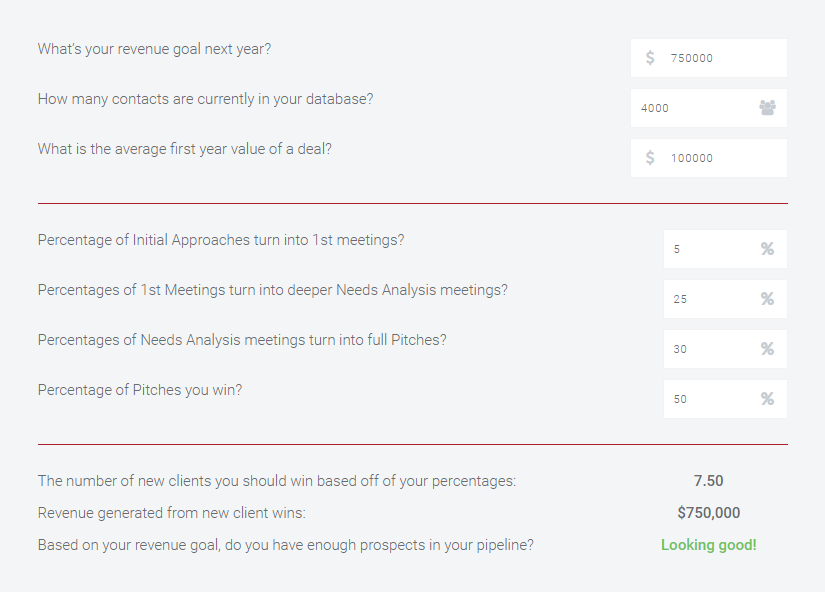When embarking on a proactive prospecting program, there are some core steps that can’t be skipped over on the road to success. And the foundation is developing a solid, well researched target list. Below are the steps we recommend to clients to set that foundation.
1. Focus On A Vertical
Catapult programs are designed around core verticals or segments. Most often we build out lists with our agency clients by selecting target verticals they are best suited for, where they have subject matter expertise and case studies to provide credibility to prospects. A narrow focus enables you to curate and create outbound messaging to all companies within each selected vertical with a high level of relevance, leading to stronger engagement faster than a general message across verticals typically does.
2. Identify Your Right-To-Win Brands
…and research them well. For each vertical selected, the company list can be narrowed by such criteria as revenue, media spend and location. By targeting the companies that you can build credibility with, you’re able to laser-focus sales efforts around their unique needs. Don’t just rely on lists pulled from your criteria. Review top business rankings lists within specific verticals we are targeting to ensure we have all relevant companies included on the lists for our agency clients.
When researching each company to determine if it fits note challenges the company and/or industry is facing. These insights are later converted into talking points for email and phone outreach.
3. Uncover Key Decision Makers
When the list is narrowed down to the top companies in a vertical, find the key decision makers within each based on job function and rank. Who the right contacts are will vary depending on your agency’s services. For example, a social media agency surely will want to connect with a social media director. However a branding agency likely would not.
Focus on C-suite, VP and director-level marketing professionals; depending on your agency, you may also want to target manager-level contacts. What’s important is that you’re only targeting decision-makers or influencers. Pro Tip: try to find at least 5 – 7 contacts per company/brand. Experience tells us that there is rarely just one decision maker, and it’s not always the obvious one that will respond and champion engagement with your agency.
It’s also helpful to scour the web for financial statements, press releases and trade articles for mentions of other relevant contacts at the company.
And, once you’ve completed the list, make sure to import it to a CRM database so you can effectively track your outreach. A few that our clients have used Salesforce, Pipedrive, and Hubspot to name a few.
4. Dig Deeper for 1:one or 1:few personalization
Uncovering information on your contact list through LinkedIn helps confirm the employee is still with the company and remains in the appropriate role. LinkedIn is also useful for mining additional contacts in the company – you may find additional relevant prospects you have not found previously.
During this process make sure to take notes of mutual contacts, past employers, links to presentations, schools attended or other points of connection that you can use in your outreach to that contact. You will need the email address information for these contacts found outside of the database. Try looking at the email naming conventions of the other contacts in the company; 90 percent of the time the naming convention will hold for the missing emails. If all else fails, there are a number of online tools available to help find alternative email address suggestions like Clearbit, Hunter.io, or RocketReach.
At this point, you may be asking yourself how to do all this with the resources you have.
At Catapult, we’ve heard, and done, it all to try to crack the code on list building. Calling the company’s main line, filling out a web form, or hoping you have a mutual connection in your core network are not efficient or effective ways to connect with senior decision makers.
And getting the decision maker information is not an easy task. All too often, agencies rely on new business people or account people to track down prospect contact information on their own. If the contact data is even found, it’s often inaccurate and incomplete. This process eats up your team’s time and takes them away from more important business activities.
To solve this dilemma, many agencies subscribe to database services that provide accurate, direct contact information on prospects. And they supplement this data with their own due diligence to gain information that is relevant, current and provides insights for smarter prospecting messages.
There are a number of database providers available online, such as Winmo, our sister company, which offers vetted and current prospect contact information for relevant to ad agencies, marketing firms and creative agencies. A sophisticated database and intelligence service provides much more than contact information. It also can offer company financial data, existing agency relationships and recent news articles to help you better identify your best prospects.
When selecting a database provider, look for one that employs teams of researchers to validate and refresh the data on a regular basis, at least every 3-6 months. It’s also important that company specializes in advertising and marketing contacts so the prospects align with your target audience.
Your prospect data list is the most important part in agency new business outreach. If you don’t have a relevant and accurate list of prospects and an efficient way to get this data, even the best messaging will fall on deaf ears. Using the steps outlined above, supported by a database platform for efficiency and speed, makes this scalable so business development folks can spend more time on outreach, engagement and conversion to new business…and less time trying to track down contact information!













